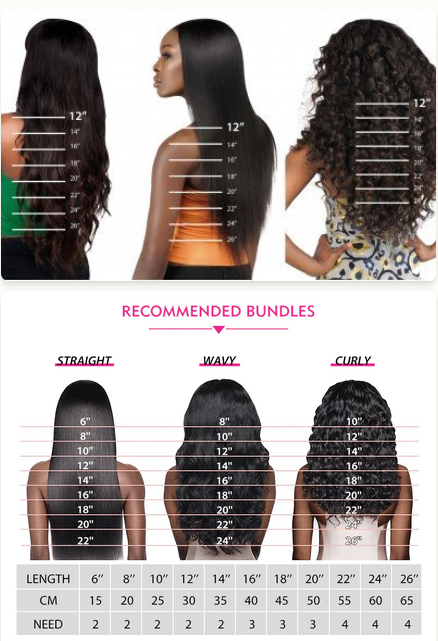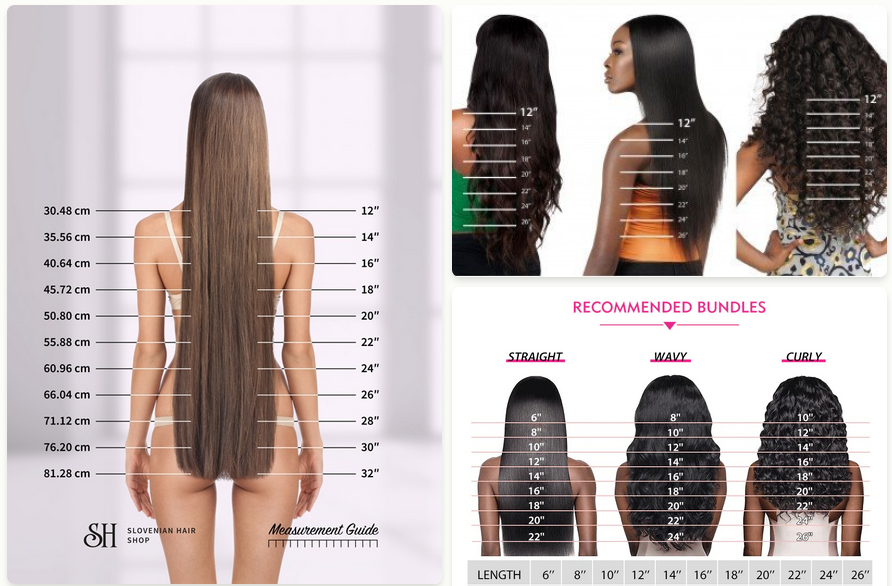Do you want to know how to measure hair length? It’s easy! Just follow these simple steps and you’ll be able to accurately measure your hair in no time.
When it comes to hair, length is an important factor that many individuals consider. Whether you are looking to grow your hair out, try a new hairstyle, or simply keep track of your hair’s progress, knowing how to accurately measure hair length is essential. In this comprehensive guide, we will explore various methods and techniques for measuring hair length, as well as provide helpful tips and insights along the way. So, if you’ve ever wondered how to measure hair length, read on to discover everything you need to know.
Step-by-Step Guide to Using a Tape Measure
| Steps | Instructions |
|---|---|
| Step 1 | Unwrap your tape measure and find the end with the smaller numbers. |
| Step 2 | Choose a section of your hair that you want to measure. |
| Step 3 | Hold the tape measure so that the end of it touches your scalp. |
| Step 4 | Use one hand to hold the tape measure at your scalp and the other to stretch out and measure your hair. |
| Step 5 | Take note of where your hair ends. |
| Step 6 | Repeat the process on each side, the crown, and the back of your head. |
Why Measuring Hair Length is Important
Understanding the importance of measuring hair length goes beyond mere curiosity. It serves as a critical metric for various aspects of hair care and styling. Knowing your exact hair length can significantly influence your hair care routine, helping you make informed decisions that contribute to healthier, more beautiful hair.
Tracking Hair Growth Progress
One of the primary reasons people measure their hair length is to track hair growth progress. Whether you’re recovering from hair loss or aiming for a specific length, regular measurements can provide valuable insights into the effectiveness of your hair growth regimen.
Choosing Suitable Hair Care Products
Your hair length can also dictate the type of hair care products you should use. For instance, shorter hair may require less product but more frequent styling, while longer hair might need more intensive conditioning and detangling solutions.
Deciding on Your Next Hairstyle
Lastly, knowing your hair length can help you decide on your next hairstyle. Whether you’re considering a dramatic cut or adding extensions, your current length serves as a starting point for any transformation.
Measuring your hair length is not just a vanity metric; it’s a practical way to optimize your hair care routine and styling choices. For those dealing with hair loss or thinning, knowing your hair length can also guide you in choosing suitable solutions like European hair wigs, hair toppers for a thinning crown, or hair extensions for bald spots.
Tools for Measuring Hair Length
When it comes to accurately measuring hair length, the tools you choose can make a significant difference in the results. Understanding the pros and cons of each tool can help you select the most suitable one for your needs, ensuring that you get the most accurate measurements possible.
Measuring Tape
The flexible measuring tape stands out as the most accurate tool for measuring hair length. Its flexibility allows it to follow the natural curves of your hair, providing a precise measurement from the scalp to the tip. However, it’s essential to use it correctly, ensuring that the tape is straight and taut to avoid any inaccuracies.
Ruler
While a ruler can also be used for this purpose, it lacks the flexibility of a measuring tape, making it less ideal for capturing the natural flow of your hair. It can be useful for measuring shorter lengths, but may not provide the most accurate results for longer hair.
Comparison Shots
Comparison shots or periodic photographs can serve as a less precise but visually informative method for tracking hair growth over time. While this method won’t give you exact measurements, it can be a fun and engaging way to document your hair growth journey.
Choosing the right tool for measuring your hair length is crucial for accurate results. If you’re looking for more detailed guides on how to use these tools effectively, check out our articles on how to use a measuring tape for hair length and tips for taking accurate comparison shots.
Interested in tracking your hair growth journey with precision? Discover Amazon range of specialized measuring tools designed for hair care!
How to Measure Hair Length

Measuring hair length may seem like a straightforward task, but there are a few key factors to consider, ensuring accuracy. Here’s a step-by-step guide on how to measure hair length:
1. Start with clean, dry hair:
Before measuring, make sure your hair is clean and dry. This will provide a more accurate measurement, as wet or dirty hair can appear longer or shorter than it actually is.
2. Gather the necessary tools
To measure your hair length, you will need a measuring tape or ruler, a mirror, and preferably a friend or family member to assist you.
3. Find a flat surface
Stand in front of a mirror on a flat surface, such as a bathroom countertop or a table. This will make it easier to measure your hair from the roots to the ends.
4. Section your hair
Divide your hair into manageable sections to ensure an even and precise measurement. You can use hair clips or elastics to keep each section in place.
5. Measure from the roots
Starting at the roots of your hair, carefully place the measuring tape or ruler against your scalp. Gently pull the tape or ruler down until you reach the ends of your hair.
6. Read the measurement
Once you have reached the ends of your hair, take note of the measurement. This will be your hair length.
7. Repeat for accuracy
To ensure accuracy, it’s recommended to measure your hair length from multiple sections of your head. This will account for any variations in hair length due to layers or uneven growth.
By following these steps, and using our Hair Growth Calculator, you can accurately measure your hair length and keep track of your hair’s progress over time. Please read the full article about Wig Length Chart, it will help you Choose the Right Length for You.
Categories of Hair Length
Understanding the different categories of hair length is crucial for anyone looking to embark on a hair growth journey or simply maintain their current style. These categories not only help in setting realistic hair growth goals but also in choosing the right hair care products and styles that suit each length.
Short Length
When it comes to short length hair, we’re talking about tresses that fall above the shoulders. This length is often considered low-maintenance and offers a variety of styling options, from pixie cuts to short bobs. However, don’t be fooled by the “low-maintenance” tag; short hair requires regular trims and specific products to keep it looking its best.

Medium Length
Medium length hair, on the other hand, falls between the shoulders and the mid-back. This is a versatile length that allows for a balance between the manageability of short hair and the style options of long hair. Whether you’re into braids, ponytails, or loose waves, medium length hair has something for everyone.

Long Length
Finally, long length hair is what falls below the mid-back. Often seen as the epitome of femininity and glamour, long hair offers endless styling possibilities but also demands the most care. From split ends to potential breakage, long hair comes with its own set of challenges that require specialized care products and regular salon visits.

Understanding your hair length category can significantly impact your hair care routine and styling options. If you’re unsure about how to care for your specific hair length, check out our comprehensive guides on 6 Inch Hair Growth. These guides offer in-depth advice and product recommendations tailored for each hair length.
Ready to dive deeper into the world of hair care? Explore our range of specialized Best Hair Dryers for Black Hair Now!
FAQs about Measuring Hair Length
How often should I measure my hair length?
There is no set rule for how often you should measure your hair length. It ultimately depends on your personal preferences and goals. Some individuals prefer to measure their hair length every few months to track their progress, while others may choose to measure it less frequently.
Does hair length vary across different hair types?
Yes, hair length can vary across different hair types. Individuals with curly or coily hair may find that their hair appears shorter due to the natural curl pattern. In contrast, individuals with straight hair may find that their hair appears longer. Despite these variations, the measuring technique remains the same for all hair types.
Can I measure my hair length if I have short hair?
Yes, you can measure your hair length, even if you have short hair. Simply follow the same steps outlined earlier, starting from the roots and measuring until the ends of your hair. Remember to divide your hair into sections for a more accurate measurement.
Can I measure my hair length if I have layered hair?
Yes, you can measure your hair length, even if you have layered hair. It’s recommended to measure your hair length from multiple sections of your head to account for any variations due to layers. This will provide a more accurate measurement of your overall hair length.
Are there any alternative methods for measuring hair length?
While using a measuring tape or ruler is the most common method for measuring hair length, there are alternative methods available. Some individuals prefer to use a string or piece of yarn to measure their hair, which can then be measured against a ruler or measuring tape. The key is to ensure accuracy and consistency in your chosen method.
How can I keep track of my hair length measurements?
To keep track of your hair length measurements, consider creating a hair journal or using a hair tracking app. These tools allow you to record your measurements over time and track your hair growth progress. Additionally, you can take photographs of your hair at each measurement point to visually see the changes.
Conclusion
Measuring hair length is a simple yet essential task for anyone looking to keep track of their hair’s progress or make informed decisions about hairstyles. By following the steps outlined in this guide, you can accurately measure your hair length and gain a better understanding of your hair’s growth journey. Remember to be consistent in your measurements, divide your hair into sections, and take note of any variations due to layers or hair types. So, go ahead and grab a measuring tape or ruler, and start measuring your hair length today!
- AI Powered Bald Filter Online 2024: See Yourself with No Hair! - January 19, 2024
- Harklinikken Bad Reviews 2024: Analyzing Negative Feedbacks - January 18, 2024
- How to Get the Alex Eubank Hair | Step-By-Step Tutorial 2024 - January 18, 2024







